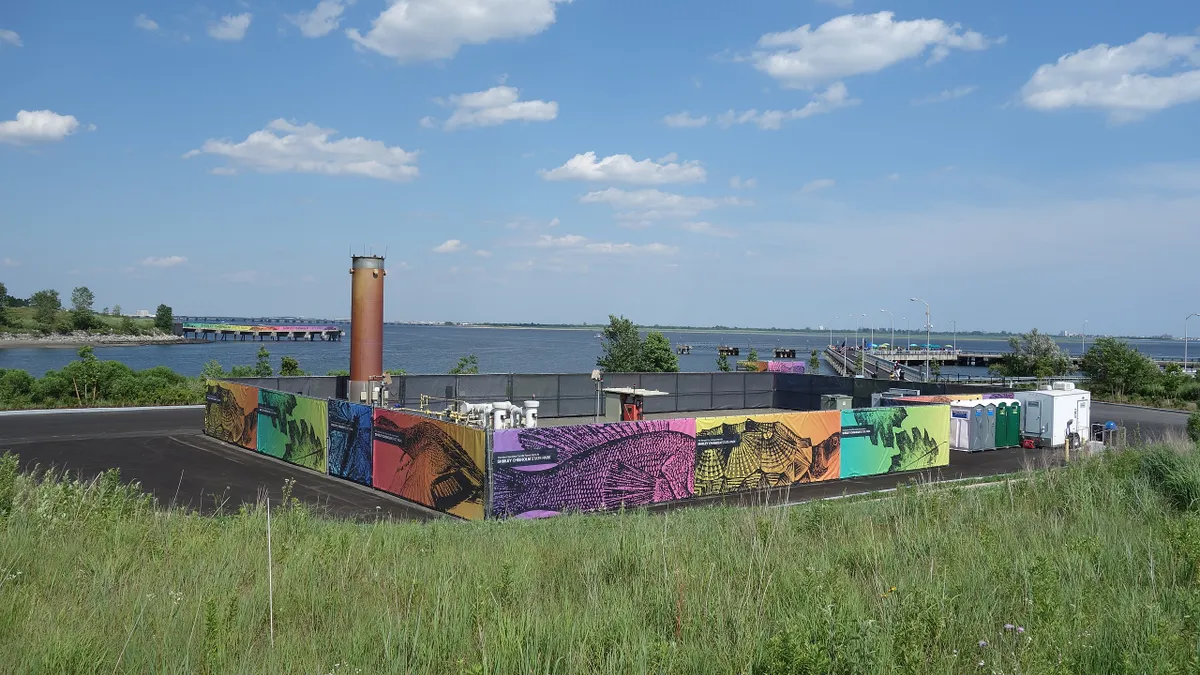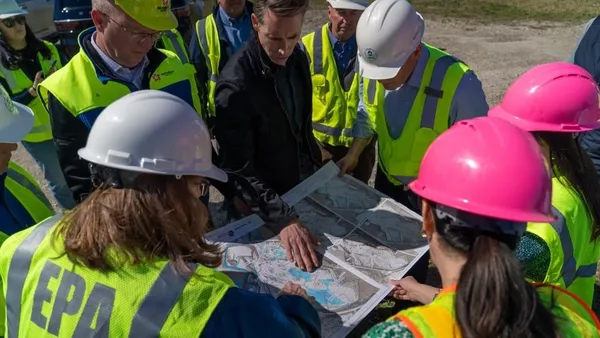Dive Brief:
- The U.S. EPA is warning MSW landfill owners to get in compliance with landfill gas laws in a pair of enforcement alerts released Wednesday.
- EPA inspectors conducted more than 100 inspections of landfills over three years and found that many of them aren't following proper procedures to inspect and maintain the systems they use to collect gas. The EPA also said MSW landfill owners may be misrepresenting their emissions or waste in place to avoid needing to install gas collection systems.
- The alerts come after EPA warned landfill owners last year it would be focusing on inspection and enforcement of landfill emissions requirements. That focus comes as part of the administration’s efforts to target pollutants with the greatest global warming potential, namely methane and hydrofluorocarbons.
Dive Insight:
Reducing landfill methane gas emitted into the atmosphere is a key priority for the United States' efforts to address climate change. Landfills are known to emit the third most methane of all sources in the country, according to annual EPA data. But their actual emissions may be even higher than documented due to limitations in current standard practices for gas collection and measurement.
Methane is considered a “climate super-pollutant” by the agency’s scientists, as it’s about 80 times more potent than carbon dioxide as a greenhouse gas. Methane from landfills accounted for about 17% of the country’s total methane emissions in 2022, according to the agency’s annual greenhouse gas inventory.
“After the hottest summer on record, the need to limit climate change is more critical than ever before,” EPA Assistant Administrator for Enforcement and Compliance Assurance David Uhlmann said in a statement. "Landfill owners and operators must meet their legal obligations to control methane emissions that contribute to global climate change — and EPA will hold them accountable if they fail to do so.”
In addition to ramping up enforcement, the EPA is also in the process of updating emission regulations for landfills. The agency has also begun testing the viability of alternative monitoring methods for methane emissions and updates to its model for estimating a landfill’s total emissions. Landfill owners have been calling for the latter change and argued that the enhanced scrutiny they’re receiving is unnecessary.
The most common method of emissions monitoring for landfills involves a person walking the surface in a serpentine path, holding a gas monitor close to the ground. If the person encounters an elevated gas level, they're required to slow down, obtain the highest reading of gas and mark the exceedance. Landfills operators are allowed to exclude certain sections from monitoring if they're too steep or otherwise dangerous for an inspector to walk.
Landfill owners are required to construct a gas collection and control system if monitoring reveals their site’s emission rate exceeds a certain threshold. That rate is determined via a calculation that takes into account the waste put into a site over time and the estimated decay of degradable substances within the landfill. Non-degradable substances, like concrete, metals or certain inert materials in construction and demolition waste, can be excluded from this calculation so long as owners still keep a record of receiving that waste.
When the rate reaches or exceeds 34 megagrams of non-methane organic compounds per year, the landfill owner must come up with a design plan for a gas collection and control system within 12 months and install the system within 30 months.
The EPA reported finding "widespread shortcomings" in monitoring efforts at landfills, including places where methane emissions were 100 times higher than the regulatory limit. The agency found several different kinds of violations at multiple landfills that could have caused methane emissions exceedances, including inadequate maintenance of the gas collection and control systems, and some landfill cover layers leaving waste exposed.
The agency also documented “widespread” issues with owners not following procedures. Some landfill owners were reportedly excluding areas that should not have been excluded from regular monitoring walks, such as the regular side slopes of a landfill. “Many landfills” also don’t have a proper plan in place for finding and addressing issues with the daily cover, per the agency. And the EPA also discovered owners that were characterizing degradable waste, like wood and wallboard, as nondegradable, which in effect lengthened the amount of time before they needed to install a gas collection and control system.
The EPA provided a list of prior enforcement actions it’s announced against landfills that failed to meet gas regulations. The most recent action was in January, when the agency announced an agreement with a Republic Services subsidiary over a landfill in Niagara Falls, New York. The settlement required the waste company to pay a $671,000 fine and upgrade its gas collection system.
The agency did not list every landfill it found to be out of compliance over the three-year period at issue, though it said it would use “civil and criminal enforcement resources where needed” to get landfills in compliance. Other landfills it’s announced enforcement actions against include the WM-operated Mill Seat Landfill in Bergen, New York; WM’s Riverbend Landfill in McMinnville, Oregon; the City of Midland Landfill in Michigan; and the Gary Sanitary Landfill in Indiana.















